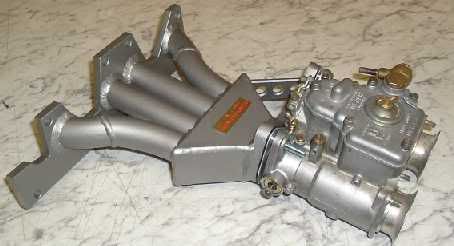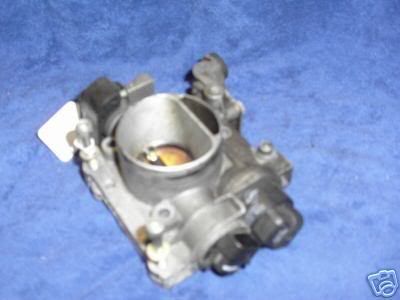So let me see if I can cover the facts and then get to the questions;
The effects we want to take advantage of are: Pulse charge, ram and scaverging, all these being in tune with induction, inlet, head and exhaust. Change one and knock it all out.
I believe that that longer inlet tracts means the gas speed is increased hence additional torque/lower power curve due to increased airflow at lower revs... But the restriction would be at higher revs as it doesn't flow fast enough.
So....
I have an idea for a modification but am unsure of how to go about it so I wondered if anyone can comment and perhaps get me off the drawing board.
The inspiration was seeing this made by guy croft:

I have always thought of having something like this made (equal length inlet tracts) and I have always thought that the inlet design as standard is compromised and its peak flow would be too high for me to use (12,000rpm or more).
Originally I thought to add a spacer made from the gasket much like what I had done on my 1242 Cinquecento exhaust manifold, this way I can increase the tract of the individiual ports whilst also giving the injectors more room to mix with the air and improve the charge mix without worring about how they are mounted...
The problem with this idea is that I would block the spark plugs after any decent length...
But then the other night I thought about the spacer being tubular like the above picture with the gasket spacer either end of these equal length tubes...
I use a plastic manifold on my car mpi 1.2 8v punto, so cannot port match (there is a cast manifold in the range, however the plastic is a better design to start with plus I have the problems with the ICV, TPS and Map sensor wiring... No thanks) however with the metal spacer I can machine to the right size of the plastic and portmatch the head end etc etc.
I would of course given the nature of the mod want to test it on a flow bench to see if it will work properly (no port being starved) and the mix swirling (or whatever it does, pulsing) as it should but dont know how to start.
What do you think?

This is not showing off my MS paint skills but to get an idea of what I am talking about.
2-4mm gasket sealing face made from gasket as template, 4 tubes of equal length welded and that same gasket sealing face the other side.
Access to sparks no longer an issue and inlet can be increased as much as needed but the injectors staying put in the plastic so they have more chance to mix properly...
I was going to get a first attempt made in the next few weeks but getting it flow tested with a plastic manifold is where I am stuck...
Who would do that, an engineering firm that would make the spacer?
What do you guys think?

